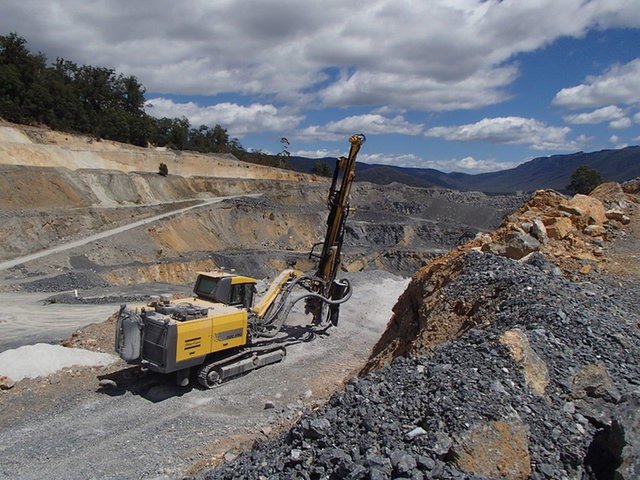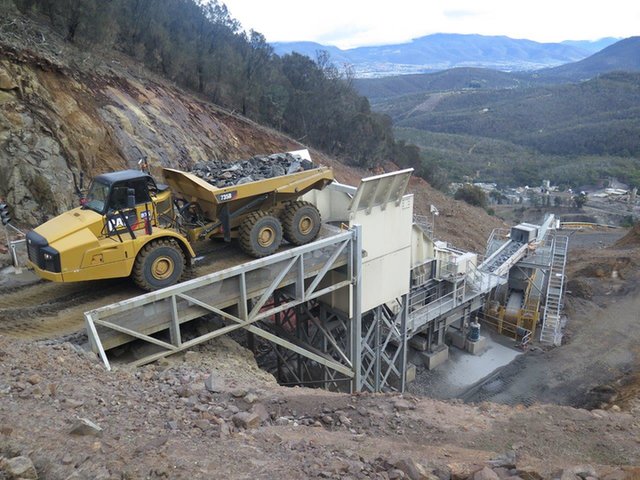STATE PROFILE
On a high, but for how long: the fortunes of mining in Tasmania
For more than a century, mined goods have been one of Tasmania’s primary exports. However, last year a dip in commodity prices and government reluctance to invest in exploration led some to question the sector’s longevity. So where does mining have left to go on the island state? Scarlett Evans finds out


Over the past year, there has been a surge of mining activity in Tasmania. According to the most recent Australian Bureau of Statistics (ABS) State Accounts, the financial year 2017-18 saw mining output in the region increase for the first time in four years, rising by 8.8%. ABS expenditure figures also showed that twin the 12 months to the end of June 2018, Tasmanian exploration expenditure was up by 97% from the previous year – equating to $25.8m.
The landscape is vastly different to a year ago, when a lack of investment into new exploration from both companies and the government prompted one expert, University of Tasmania geology professor Ross Large, to warn of the sector’s demise within the next decade. Speaking to ABC, Large said “they're taking our resources but they're not putting money back...the companies have a fault, [and] the government has a fault because they’re not supporting the industry enough in terms of exploration.”
Economist Saul Eslake says the sector’s revival is due to a rebound in prices encouraging operators in the region to increase production, while some previously closed mines have been able to reopen.
“This is about known deposits becoming more commercially viable and leading to increased production,” Eslake explains, “rather than the opening up of new mines.”
Are reports of an early demise greatly exaggerated?
At the time of writing, the price of iron ore is sitting at $67 per tonne, a promising figure considering that the long-term average is around $13 per tonne.
As Eslake says, the boost in price has meant “government spending on mineral exploration has picked up strongly over the past year” leading to “a significant improvement in confidence in the mining industry in Tasmania.”
Looking back now, fears of the sector’s demise seem unfounded. Sam Baker, a financial analyst from Shadforth Group, says the negativity around exploration and new development in the state was “predominantly directed at upcoming sites, rather than established operations”, due to the smaller mines’ greater vulnerability to changes in commodity price.
Similarly, Tarkine campaigner for the Bob Brown Foundation Scott Jordan says that fears were ‘largely rhetoric’, with most of the concerns falling on smaller start-ups that were “promising the world and were unable to deliver...falling over as soon as prices stabilised.”
The region’s primary operations at Rosebery, Savage River and the Renison Joint Venture tin mine remained stable during last year’s dip
Indeed, the region’s primary operations at Rosebery (producing zinc, lead, gold, copper and silver), Savage River (producing magnetite), and the Renison Joint Venture tin mine, remained stable during last year’s dip.
Now, several new mining projects sit on the horizon, including the Hellyer gold mine and Forward Mining’s Rogetta iron ore mine, notable for their promised attempts to mitigate environmental damage at the sites.
Hellyer is to reprocess tailings worth an estimated $1bn from previous operations over the next nine years, while Rogetta is to be a greenfield open cut mine, forecast to produce 1 million tonnes (Mt) per year of magnetite over a seven-year lifespan. Federal Environment and Energy Minister Josh Frydenberg said the latter project was an example of a development that was both “economically beneficial and environmentally sustainable”.
Looking at the Tasmanian mining industry now, it would appear to be going from strength to strength. However, the volatility of the industry begs the question of just how sustainable the high is.

More than half of the country’s coal mines are managed by pro-Russian separatist militia. Credit: DmyTo/Shutterstock.
More than half of the country’s coal mines are managed by pro-Russian separatist militia. Credit: DmyTo/Shutterstock.
China and poor regulation: the challenges of mining in Tasmania
According to Baker, one of the primary threats facing the industry today is the trade war between China and the US, as Chinese demand accounts for a vast section of Tasmania’s iron exports. In addition, Baker says the state’s mining sector is “more vulnerable to weaknesses in prices due to the higher cost nature of operations there,” and any upset in the Chinese economy has the potential to throw off the sector’s upwards trajectory.
There are some, however, who say the trade war may not be as damaging as people fear. According to Business Insider Australia, China’s economy is too big for US tariffs to have much of an effect. Moreover, according to Jordan, the trade war may in fact bring benefits to the industry. “If China is not trading with the US it may open opportunities for Australia in that aspect...it’s a commodity by commodity picture,” he says.
Once operations were underway, Shree announced it had 20 times more acid-producing material than was originally disclosed
Jordan notes that the main problem mining faces is a flawed regulatory system, which he labels a “systemic problem that encourages poor behaviour”. In particular, he cites the fact that companies often receive permits they are unable to adhere to. One such example is Shree Minerals’ Nelson Bay River mine proposal, which was granted on the basis that all acid-producing material was to be stored below water level. Once operations were underway, Shree announced it had 20 times more acid-producing material than was originally disclosed.
“When they were in breach of their licence, the EPA tried to retrospectively fix the problems for them rather than prosecute,” says Jordan. “And now we have 80,000 cubic metres of acid producing waste in breach of court order and permit.
“We can’t have any confidence that any mine approval is worth anything if the conditions are so flexible that people feel they can move them whenever they need to break them. That doesn’t provide a stable climate for investment, and environmental groups have to take concerns to the court when regulators fail to do their job.”

More than half of the country’s coal mines are managed by pro-Russian separatist militia. Credit: DmyTo/Shutterstock.
Environmental concerns versus ‘freakish’ returns
In addition, Jordan cites the faults of the reserve system, as many sites available to mining companies are in fact within reserve areas, blurring the lines between regions in need of protection and those up for grabs in mining and logging. Alongside Nelson Bay River, projects such as Riley Creek, Livingstone and Mount Lindsay fall within conservation areas, with the latter three coming under the Tasmanian forest agreement. Pushback from environmental groups has seen the stalling of these projects, though Jordan dismisses the idea that activists are causing serious delays to the mining sector as a whole.
“A lot of companies like to say environmental groups come in and head projects off,” he says, “but the harsh reality is that while our actions and our campaigns certainly caused delays to projects, the market caught up with them. Projects were shut down because they just were not financially viable.”
Alongside Nelson Bay River, projects such as Riley Creek, Livingstone and Mount Lindsay fall within conservation areas
He adds that these stalled schemes are unlikely to bounce back, as many are waiting for iron ore prices to improve despite their current unprecedented highs.
“When people talk about price recovering, they’re actually talking about it returning to a freakishly high level,” says Jordan, “which none of the market analysts in the field are ever predicting it likely to do.”
While these projects may not have a future in Tasmania, for the established sites it seems it will remain business as usual. And while regulatory setbacks and fears over the trade war make the future of mining in Tasmania rocky, for now the industry will continue rumbling on.
